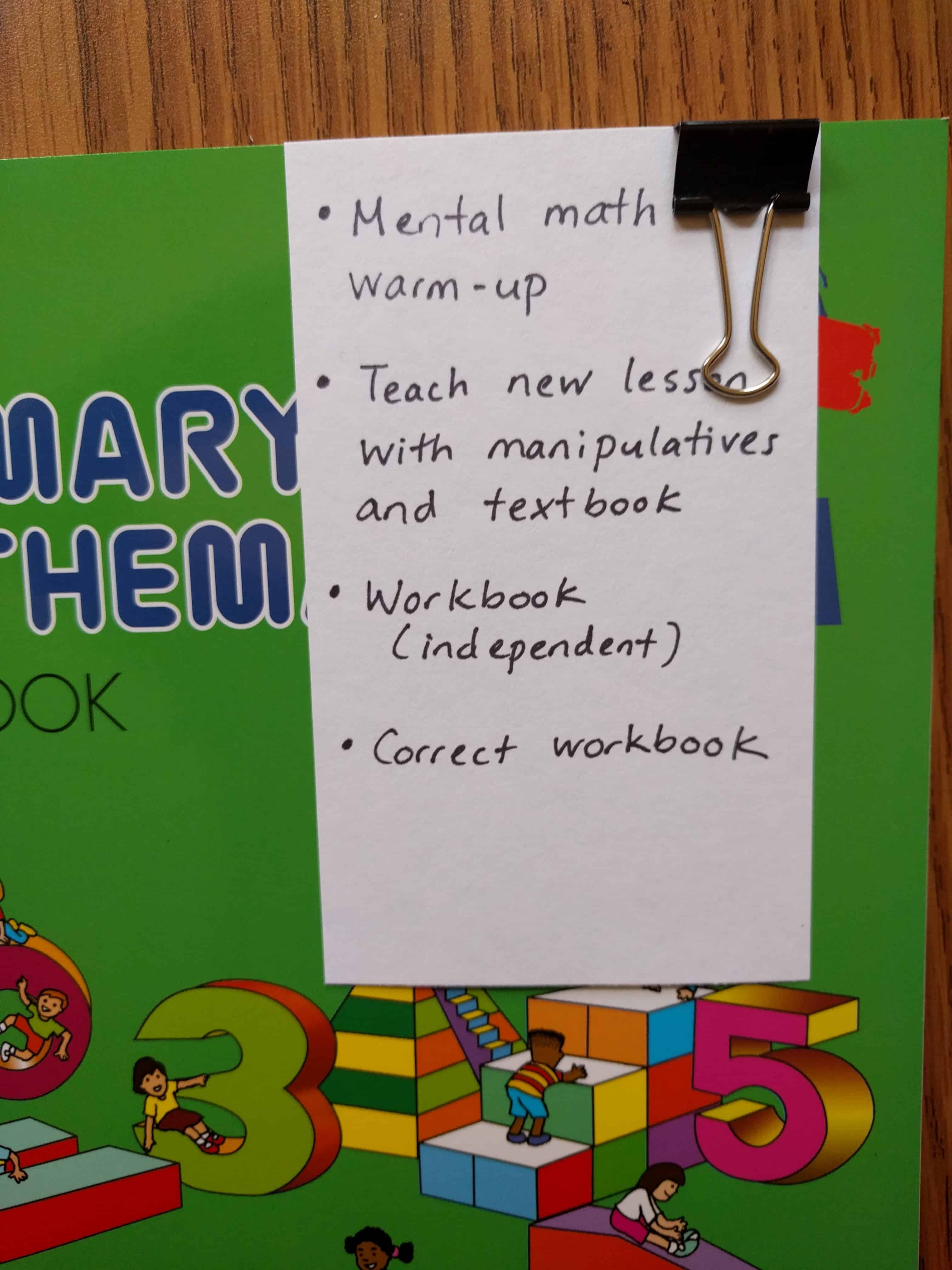 It doesn’t take a ton of time to get well-prepared for teaching math, but spending a little time now will make you much more effective and efficient once you start your school year. Here’s how to invest an hour now that will pay dividends all year long. Grab a cup of coffee, and let’s go!
It doesn’t take a ton of time to get well-prepared for teaching math, but spending a little time now will make you much more effective and efficient once you start your school year. Here’s how to invest an hour now that will pay dividends all year long. Grab a cup of coffee, and let’s go!
30 minutes: Get to know your curriculum.
You’ve opened the box and oohed and aahed at all the pile of new, shiny books. Now, it’s time to get to know your math curriculum.
- Read the introduction in the Teacher’s Manual. This will give you the big picture of how your math program works and what it’s trying to accomplish. Authors pack a ton of information in here, so make sure you read it!
- Look over all the books that came with your math curriculum. Make sure you know what each component is for. Scan the teacher’s manual and student books to get a sense of how each lesson is laid out.
- Count up how many lessons there are in the year. Then, make a (very tentative) plan for how many lessons you’ll do each week. Kids sometimes need to stop and practice a skill longer than the textbook expects, so make sure to allow for a little extra leeway. If the book has more lessons than you think you can cover in a year, think now about whether there are chapters you might want to skip or condense.
15 minutes: Make a “cheat sheet” for what your daily lessons will look like.
I find it really helpful to have a quick “cheat sheet” that reminds me of the most important parts of my kids’ lessons. This little index card is super-simple, but it’s very handy for keeping on track during all the multi-tasking of a typical homeschool day.
Look over your teacher’s manual and make an outline of the key components that you want to make sure to hit each day. Then, jot these most important items on a post-it or index card. I keep my cards clipped to the front of my kids’ math books so that I can’t miss them. (Make sure to include correcting your kids’ work on your cards, since kids make the most progress when they can immediately correct their errors.)


15 minutes: Decide how you’ll keep papers and manipulatives under control.
Papers and math manipulatives can quickly overrun the entire house if they’re not kept in check. If your math program is workbook-based, papers may not be a big problem. But if you’re using a textbook, it’s easiest to have your child do her work in a spiral notebook so that it’s all in one place. Graph paper notebooks (like this one for younger kids or this one for older kids) are especially nice for helping kids keep their numbers lined up neatly.
For one-on-one teaching, my kids and I love using a small whiteboard rather than paper. There’s just something about colorful markers that makes math more fun, and it’s so easy to wipe away mistakes.
 When it comes to math manipulatives, less is more. You’ll need any manipulatives that your curriculum requires, but beyond that, keep it simple. (Download my Minimalist Math Manipulative Guide to learn how to make your own free, DIY manipulative kit.)
When it comes to math manipulatives, less is more. You’ll need any manipulatives that your curriculum requires, but beyond that, keep it simple. (Download my Minimalist Math Manipulative Guide to learn how to make your own free, DIY manipulative kit.)
To store math manipulatives, don’t worry too much about finding the perfect containers. I personally use these cheap plastic shoeboxes and Ziploc bags. As you can see, it doesn’t make for a beautiful shelf of materials, but it works!
When you understand the curriculum, have a “cheat sheet” to guide you on a daily basis, and know where you’ll put all the stuff, you’ll feel confident and well-prepared to teach your kids math this year!


Thanks, Kate! Helpful!
Seriously —- I’ve been homeschooling for HOW MANY YEARS, and I’ve never taken the time to do these things????
Many of my math woes would have been solved a long time ago by this common sense advice. Thanks, Kate!
Glad you found it helpful!
This is very helpful; thanks!
We are techie, so we use chalkboard apps on the old iPad and we airplay our math drill app onto the TV. The second thing we do to keep kids honest and not switch to a game behind my back as I help someone else plus the kids can show off.